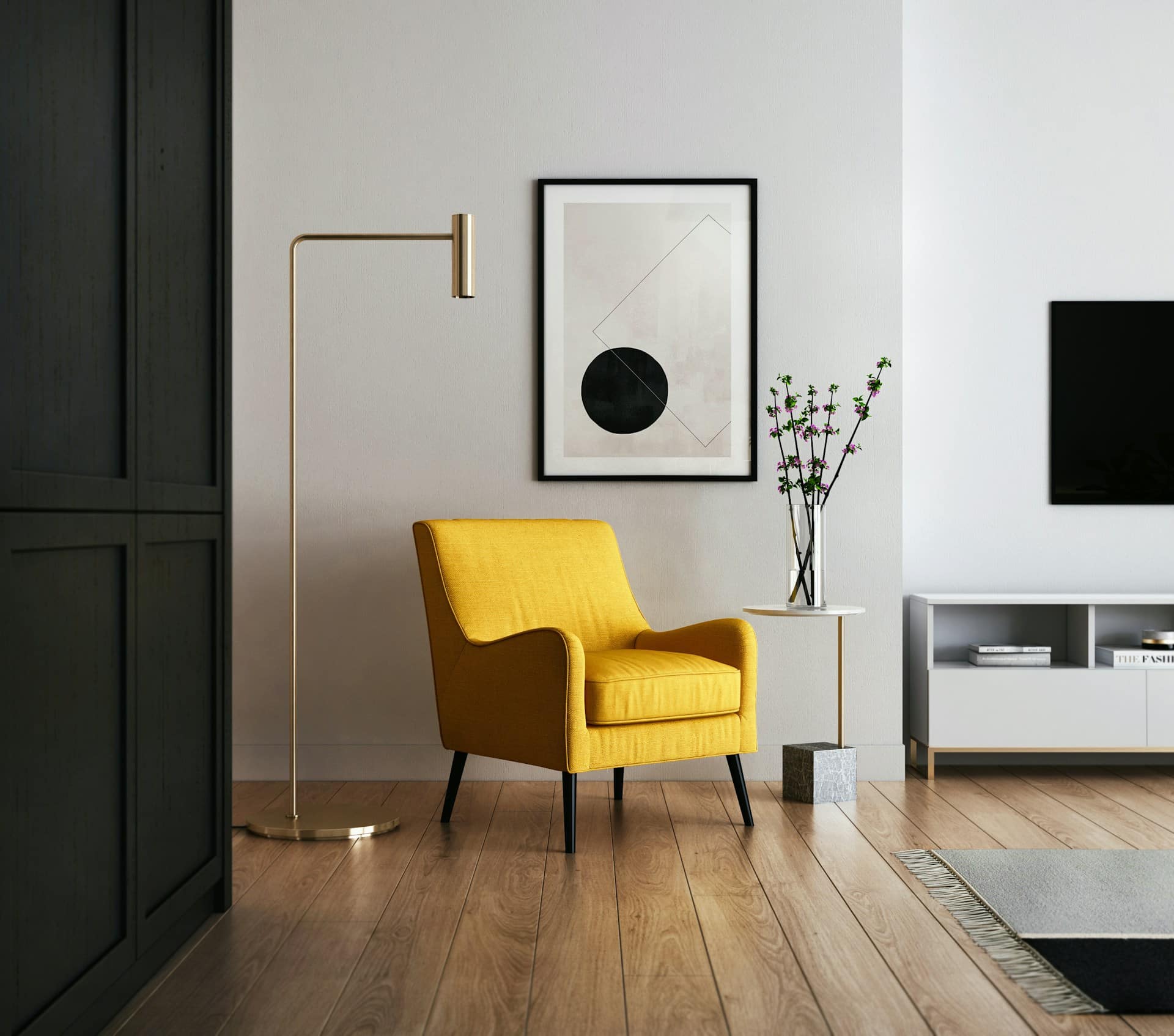How to Optimize Natural Light in Home Interiors to Improve Wellbeing?

If you’re seeking to enhance the overall ambiance and aesthetic of your home, optimizing natural light should be high on your agenda. The benefits of natural light stretch far beyond aesthetics alone – it’s a crucial element in creating a pleasant, healthy living space and can even improve your wellbeing. Sunlight in the home can boost mood, enhance productivity, and promote good health. But how do you maximize its potential in your home design? This article will guide you on how to optimize natural light in your home interior.
Understanding the Importance of Natural Light in Home Design
Before delving into the how-to’s, it’s vital to understand the importance of natural light in home design. Natural light is the brightest and most welcoming type of light. It illuminates your house, making it feel warm, inviting, and homely.
Additional reading : Expert chartered accountants in birmingham for your business success
Also, natural light offers numerous health benefits. Exposure to sunlight increases the production of vitamin D, a vital nutrient that helps prevent bone loss and reduces the risk of heart disease, weight gain, and various types of cancer. Sunlight also helps to regulate the body’s circadian rhythm, leading to improved sleep patterns and overall mood.
Natural light can also play a significant role in reducing energy costs. By allowing sunlight to enter your home, you can cut down on the use of artificial lighting and heating, thereby reducing energy consumption and saving on utility bills.
Also to see : Find top osteopaths in Leicester for back pain relief
But how can we harness this energy-efficient, health-promoting, mood-enhancing source of light in our homes?
Incorporating Windows and Doors to Maximize Natural Light
The first step in optimizing natural light is through the strategic placement of windows and doors. They are the gateways through which light enters your house, and their design and placement will have a significant impact on the amount of sunlight that infiltrates your home.
Consider maximizing window spaces and choosing large, expansive windows that allow maximum sunlight. Opt for clear, high-quality glass that offers optimal light penetration. The placement of windows is also crucial – windows facing north or south will offer a steady stream of light throughout the day, while east or west-facing windows provide sunlight in the morning or evening.
Doors can also play a part in enhancing natural light. Consider installing glass doors, or doors with glass panels, which let in more light than solid doors. French doors or sliding glass doors are also excellent options for maximizing light, especially in rooms that open to the outdoors.
Enhancing Room Design and Decor to Boost Natural Light
Room layout and decor play a significant role in the distribution of natural light. The color of your walls, the type of flooring, and the placement of mirrors all impact how light is reflected within your space.
When it comes to wall colors, lighter shades reflect more light, making the room appear brighter and more spacious. White or off-white hues are particularly effective in enhancing natural light. Similarly, opt for glossy, light-colored flooring that reflects rather than absorbs light.
Mirrors are a fantastic way of amplifying natural light. Strategically placing mirrors can help spread light around the room, making the space feel brighter and more open.
Even the choice of furniture and its placement can have an impact. Light-colored furniture will reflect more light than dark pieces, and positioning furniture away from windows can prevent it from blocking sunlight.
Using Light in Interior Design to Create Mood and Atmosphere
The use of natural light in interior design isn’t just about illuminating spaces. It’s also about creating mood and atmosphere. Light has a profound impact on our emotions and mood. Sunlight, in particular, can make us feel positive and energized.
In rooms where relaxation is key, like the bedroom or living room, diffused natural light can create a calming, serene atmosphere. This can be achieved through the use of sheer curtains or blinds.
Contrarily, in spaces where focus is required, such as a home office or a kitchen, a strong direct light might be preferable. This can be obtained by using minimal window coverings and positioning the desk or workspace close to a window.
Implementation of Innovative Home Technologies
With the advancement in home technologies, there are innovative solutions to optimize natural light. Light shelves, for instance, are an architectural feature that helps to distribute light deep into a building. It’s a high-reflectance surface placed above eye-level relative to the window, which reflects daylight onto the ceiling to light the room.
Another technology is tubular daylight devices (TDDs) that capture sunlight on the roof and convey it down through a reflective tube. This technology can bring natural light into lower levels of the house or rooms without windows.
With these insights, you can go ahead and optimize the natural light in your home interior, creating spaces that are not only aesthetically pleasing but also contribute to your wellbeing. Remember, the key is to balance natural light sources with your space, decor, and personal preferences to create a homely atmosphere that is uniquely yours.
Reflective Surfaces and Materials for Maximum Light Penetration
Reflective surfaces are another key element in optimizing natural light in your home. In essence, these surfaces bounce light around the room, thereby making it appear brighter and more spacious. This can be achieved through the use of mirrors, glossy finishes, and light-colored materials.
Mirrors are a go-to choice when it comes to reflecting light. Strategically place them opposite windows or other light sources. This allows them to catch and spread light throughout the room, amplifying the natural light’s reach.
Glossy finishes also aid in enhancing light penetration. For instance, high-gloss paint on a ceiling can reflect light back down into the room, making the space feel brighter and more inviting. Similarly, glossy kitchen cabinets or shiny tiles can help reflect light, making the room feel more illuminated.
Light-colored materials, in general, are more reflective than darker ones. Opt for light-colored furniture, rugs, and curtains. Not only will these items reflect light; they’ll also contribute to a light, airy aesthetic in the room.
Light-colored flooring can also boost the amount of natural light in a room. Light woods, pale carpets, or white tiles can all reflect natural light upwards, helping to light up your space.
Conclusion: The Power of Natural Light in Home Interiors
In conclusion, optimizing natural light in your home interior is a powerful way to enhance the aesthetic appeal of your home, boost your mood, and improve your health. Through strategic placement of windows and doors, smart use of reflective surfaces and materials, effective room layout and decor, and the implementation of innovative home technologies, you can maximize the amount of natural light in your home.
Remember, the goal is not just to increase the amount of natural light, but to create a balanced, pleasant atmosphere that caters to your personal taste and preference. Whether you’re in the living room catching up on your favorite book, in the kitchen preparing meals, or in the home office working, natural light has the power to transform your space, making it feel warm, inviting, and homely.
So, take a fresh look at your home and see where you can make changes that will help increase natural light. You might be surprised at how small adjustments can make a big difference. Don’t be afraid to experiment and find what works best for you. After all, your home should be a sanctuary, a place where you feel most comfortable and at peace.
Remember, interior design is not solely about aesthetics. It’s also about creating spaces that promote mental health and wellbeing. And when it comes to fostering a positive, healthy living environment, there’s no denying the transformative power of natural light. So, let the sun shine in and illuminate your home with its warm, energizing glow.
